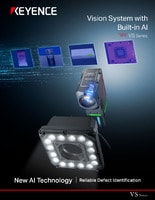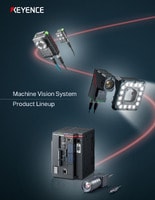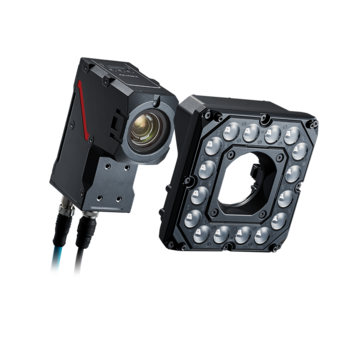Vision Systems
- Vision System with Built-in AI VS series
- Intuitive Vision System CV-X series
- Customizable Vision System XG-X series
- GigE camera and lighting for PC-based machine vision VJ series
- Inline 3D Inspection 3D Vision series
- 3D Vision-Guided Robotics 3D VGR series
- Line Scan Technology Line Scan series
- 2D Vision-Guided Robotics 2D VGR series
- LED Lighting CA-D series
- Lenses (for Machine Vision) CA-L series
- Machine Vision System Database VisionDatabase series
- Automotive
- Automation Equipment/Machine Building
- Electric Vehicles
- Medical Device Manufacturing
- Food/Beverage Packaging
- Semiconductor/Manufacturing Electronics
- Vision-Guided Robotics
- Solar
- Logistics
- Commodities
- Paper Manufacturing
- Machine Tools
- Electronic Device
- Printing
- Mining/Metals
- Fabric/Textile
- Tobacco
- Marine
- Aerospace
Machine Vision vs. Computer Vision vs. Image Processing: Key Differences
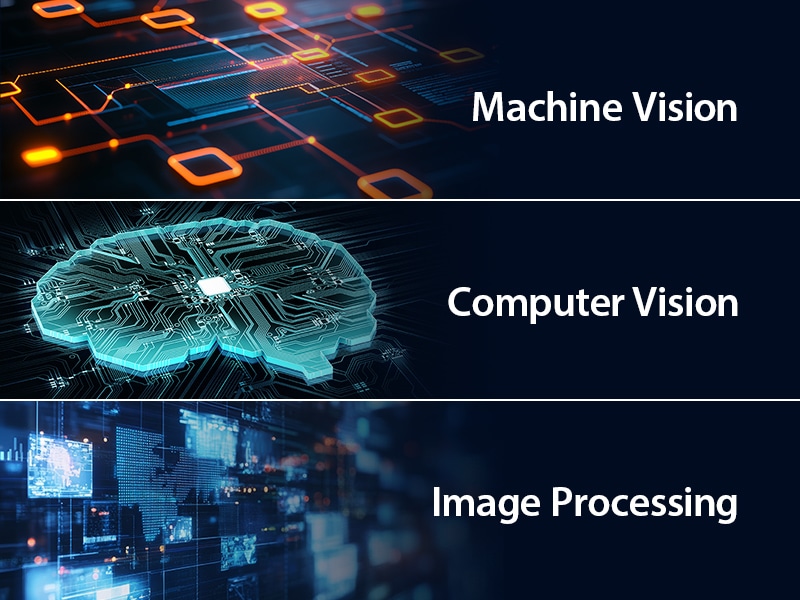
Machine vision, computer vision, and image processing all work with visual data, but they solve different problems.
Machine vision handles the inspection and control of production lines, while computer vision interprets and classifies complex visual inputs. Image processing supports both by improving image quality for analysis.
Understanding the differences between machine vision vs. computer vision vs. image processing helps teams choose the right solution for specific tasks.
What is Machine Vision?
Machine vision systems are integrated into inline manufacturing processes, where parts are inspected, measured, or positioned as they move through production. It relies on cameras, lighting, sensors, and software to carry out real-time fixed, repeatable processes.
In industrial machine vision setups, the system is calibrated for specific parts and lighting conditions; it captures images, compares them against defined criteria, and responds, typically, with pass/fail results or position adjustments.
These systems do not interpret scenes or objects at their own discretion. They only detect what they are programmed to check.
What is Computer Vision?
In contrast to machine vision, computer vision uses algorithms to interpret images, video, or sensor data as it can recognize patterns, identify objects, and segment complex visual scenes.
Computer vision handles unstructured data, unlike machine vision, which is purpose-built for structured tasks. These systems often use machine learning to improve recognition over time with applications ranging from traffic analysis to medical diagnostics to robotics. Machine vision handles the execution, while computer vision focuses on interpretation.
What is Image Processing?
Image processing involves modifying or analyzing raw visual data to improve clarity or prepare it for further steps, including noise reduction, contrast adjustment, filtering, and segmentation. It does not involve recognition or classification on its own.
Industrial image processing often serves as the first step in a more extensive process, as it supports tasks like surface inspection, barcode reading, and dimensional checks.
We’re here to provide you with more details.
Reach out today!

Key Differences Between Machine Vision, Computer Vision, and Image Processing
Each of these technologies works with image data but has different goals and methods.
- Industrial image processing modifies the image itself. While it can prepare the data, it cannot interpret or classify it.
- Computer vision extracts meaning from the image and recognizes objects, patterns, and scenes.
- Machine vision applies these concepts in real-world systems, using visual data to make decisions on physical tasks.
In most production environments, image processing is used to clean the data. Computer vision may or may not be part of the system. Machine vision takes the cleaned or interpreted data and uses it to control a process or trigger an action.
How Machine Vision Powers Industrial Automation
Machine vision is common in sectors that require high-speed quality control as they can verify product dimensions, detect surface defects, confirm label placement, and guide robotic arms. They operate without interruption and maintain output consistency at scale.
Industrial machine vision systems are engineered to meet the demands of the environment they operate in and may include high-resolution or line-scan cameras, structured lighting, and dedicated image processors. These tools help track fine details at high speeds and reduce the risk of false positives or missed defects.
The Role of Computer Vision in AI and Robotics
In robotics and AI training, computer vision systems help navigate, identify targets, and respond to changes; they give machines the ability to interpret and react to visual data like patterns and can differentiate between different objects. They also can adapt to changing input and can continue to operate even if lighting shifts or angles vary. Computer vision systems are very adept in high-speed and fast-changing environments where precise and real-time decisions must be made.
Discover more about this product.
Click here to book your demo.

Applications of Image Processing in Various Industries
Industrial image processing is used across manufacturing, healthcare, and electronics to improve the quality of visual data before inspection or analysis. It often runs behind the scenes in larger systems but plays a constant role in helping to stabilize input data.
Common applications include:
- Sorting fruits and vegetables: Segmentation and color thresholding isolate individual items and measure traits like size, shape, and surface color for grading and classification.
- Preparing printed circuit board images for inspection: Noise reduction, contrast enhancement, and geometric correction clarify solder joints, trace paths, and component alignment before defect detection.
- Sharpening medical scan data: Filters help improve edge clarity and contrast in CT or MRI images, helping radiologists and systems detect subtle features without distorting diagnostic accuracy.
- Checking fill levels and label alignment: Edge detection and template matching are used to identify liquid fill lines in bottles and verify label placement relative to defined coordinates.
Choosing the Right Technology for Your Business Needs
Choosing between these systems depends almost entirely on the complexity of the task and the environment where it is needed.
Image processing is the likely starting point if the task at hand needs to clean or prepare image data. If a system has to identify or interpret what’s in an image, computer vision offers the flexibility to handle that. If the goal is fast and automated actions, especially in high-throughput settings, machine vision provides speed and repeatability.
Contact us to learn more about how our advanced technology can help take your business to the next level.
Contact Us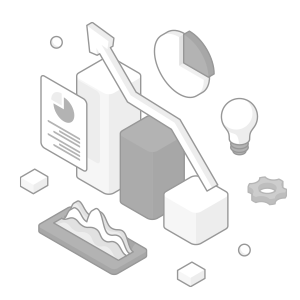
FAQs on Machine Vision, Computer Vision, and Image Processing
What Type of Hardware is Required for Machine Vision?
Machine vision systems use industrial cameras, lenses, specialized lighting, and vision controllers that are rugged and can withstand harsh environments.
What Are Common Applications of Computer Vision Outside of Manufacturing?
Computer vision has been implemented in facial recognition, healthcare diagnostics, retail analytics, smart surveillance, and autonomous vehicles. It’s also key to AI systems that have to learn and understand complex scenes.
Which Industries Benefit Most From Machine Vision?
Automotive, food and beverage, electronics, logistics, and pharmaceuticals all benefit from machine vision as it inspects parts, checks packaging, and guides equipment.
How Do I Choose the Right Vision Technology for My Business?
Consider the task complexity, environment, and speed requirements. Use image processing to enhance images, computer vision for flexible analysis, and machine vision for reliable, high-speed automation.
We’re here to provide you with more details.
Reach out today!

Related Downloads
Related Products
Industries
- Automotive
- Automation Equipment/Machine Building
- Electric Vehicles
- Medical Device Manufacturing
- Food/Beverage Packaging
- Semiconductor/Manufacturing Electronics
- Vision-Guided Robotics
- Solar
- Logistics
- Commodities
- Paper Manufacturing
- Machine Tools
- Electronic Device
- Printing
- Mining/Metals
- Fabric/Textile
- Tobacco
- Marine
- Aerospace

